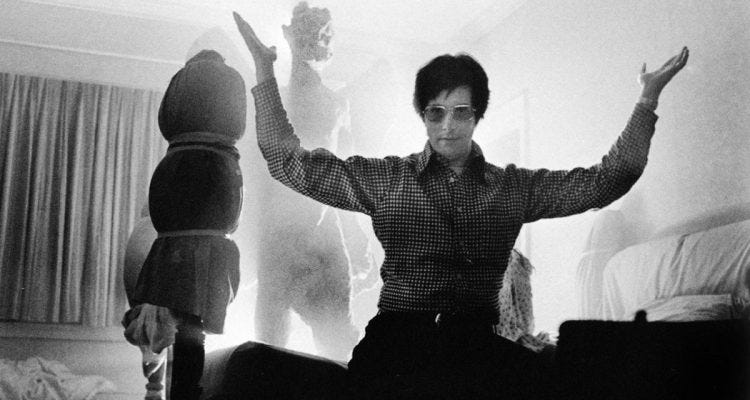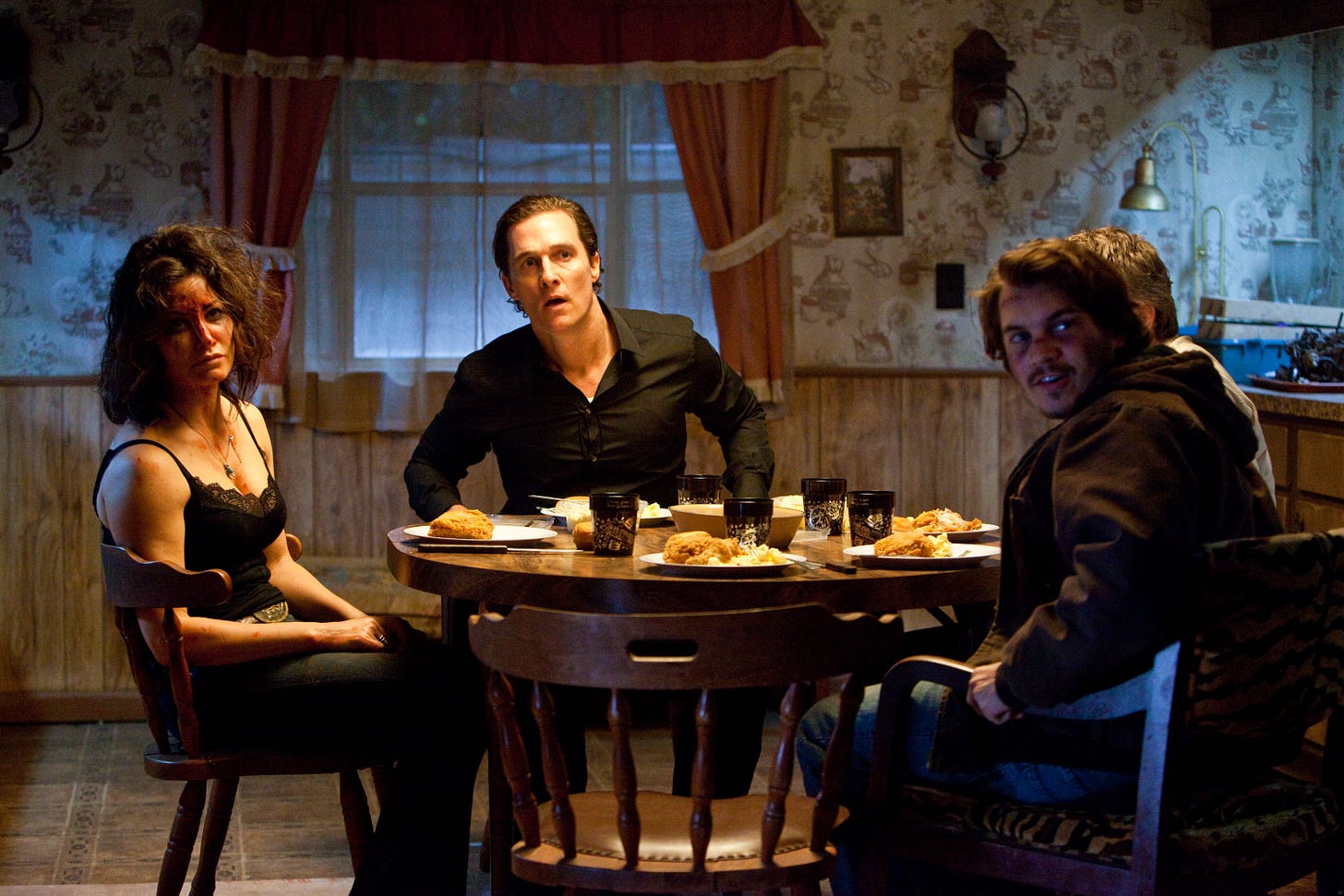William Friedkin 1935-2023
The devil of the New Hollywood generation has exited the stage.
One oddball detail caught my eye in the Times obituary for William Friedkin this morning: He cut his teeth directing “Bozo’s Circus,” among other TV shows, for Chicago station WGN. What went through the mind of the man who would give us “The Exorcist” and “The French Connection” as he filmed kiddie hijinks on a local soundstage? Bozo vomiting pea soup on the peanut gallery? Bozo going rogue for a high-speed car chase underneath the El?
One relishes the irony only because Friedkin, who died yesterday at 87, cut such a swaggering, outsized figure when he finally made it in Hollywood. The two films that sealed his fame and commerciality are vulgar, visceral classics that have no interest in pretending to be art, and their influence is profound. “The French Connection” (1971) didn’t just win five Oscars – Picture, Director, Actor (Gene Hackman), Adapted Screenplay, and editing – it invented an entirely new template for action films and an entirely new kind of action hero. “Popeye” Doyle was nasty, violent, a bully, and a racist – the last so untenable to 21st century sensibilities that the movie is currently available only in a bowdlerized edit – but he got the job done, if necessary at high speeds in a stolen car. The film was shot with a rough, handheld documentary feel that Friedkin cribbed from Costa-Gavras’s “Z” and that went on to become genre lingua franca. Every cop movie and every cop show has “Connection” and Hackman’s (reluctant) portrayal in its DNA; you’ve seen this movie even if you’ve never seen it.
As for “The Exorcist” (1972), I’d argue that by bringing the grindhouse sensationalism of B movies into the mainstream (and coating it with a patina of Christian tent-show superstition), the director revolutionized the horror genre and inaugurated the era of realistic special effects gore that eventually went digital. Vincent Canby in the New York Times was right: “The Exorcist” is claptrap. But it’s the kind of claptrap that exploits the subterranean religious fears of even agnostic audiences, and it remains as scary as hell. Or Hell. (For the record, Friedkin was Jewish and secular – he didn’t have to buy what he was selling to sell it brutally well.)
After that, the director supposedly stumbled, and his reputation as an on-set tyrant was enshrined in Peter Biskind’s essential 1998 New Hollywood history “Easy Riders, Raging Bulls.” That book painted Friedkin as the most aggressively macho figure in a filmmaking scene dominated by self-absorbed, coke-addled egotists, which, honestly, takes some doing. But time mellows many of the monsters in the movie business; after Friedkin’s death was announced, Guillermo del Toro took to Twitter to relate a lovely anecdote about the director’s on-set kindness late in the afternoon of his career.
In recent years, “Sorcerer,” Friedkin’s critically drubbed 1977 remake of Henri-Georges Clouzot’s “The Wages of Fear,” has been reassessed as a muscular masterpiece, and while the director’s later work includes a number of misfires and jobbing assignments, “To Live and Die in L.A.” (1985) is very near to being to the West Coast what “The French Connection” is to the East, the 1997 made-for-TV remake of “12 Angry Men” does right by a fantastic cast, and the two Tracy Letts play adaptations, “Bug” (2006) and “Killer Joe” (2011), are downright feral and nearly lunatic in their exploration of human squalor. Of the latter movie, I once wrote that “no one has ever accused Friedkin of behaving properly in his entire career. Visually and thematically, he’s a filmmaker of extremes — not because he’s looking for art out there but because he thinks it’s more honest and lively and real. ‘Killer Joe’’ is a vicious bit of sleaze that happens to be smartly written, impeccably shot, and beautifully acted. As far as its maker is concerned, what you do with that is up to you.”
In his final years, Friedkin worked hard to remodel himself as a raconteur and a survivor, the New Hollywood’s crazy uncle who has settled down and gives great Q&A. He wrote a memoir, “The Friedkin Connection” (HarperCollins, 2013). He made himself available to anyone directing a documentary on his era. He had plenty of stories to tell and dirt to dish, a groaning board from a life whose four marriages themselves seem a form of profligacy: Two years to French screen legend Jeanne Moreau, three to actress Lesley-Anne Down, three to newscaster Kelly Lang, and, finally, a lasting union with studio executive Sherry Lansing, who he married in 1991 and who survives him.
There’s one more film in the can: A new adaptation of “The Caine Mutiny Court-Martial” that stars Kiefer Sutherland as Captain Queen and that will premiere in September at the Venice Film Festival. If you feel like honoring the man, I’d recommend “Sorcerer”; it’s a $3 rental on Amazon and elsewhere and is the movie Friedkin always said he was proudest of. He was right to be. I’d say Billy Friedkin should rest in peace, but something tells me that’s the last thing he’d want.
What are your memories of “French Connection,” “Exorcist,” and other Friedkin films?
If you enjoyed this edition of Ty Burr’s Watch List, feel free to pass it along to others.
If you’re not a paying subscriber and would like to sign up for additional postings and to join the discussions — or just help underwrite this enterprise, for which the author would be eternally grateful — here’s how.
You can give a paid Watch List gift subscription to your movie-mad friends —
Or refer friends to the Watch List and get credit for new subscribers. When you use the referral link below, or the “Share” button on any post, you'll:
Get a 1 month comp for 3 referrals
Get a 3 month comp for 5 referrals
Get a 6 month comp for 25 referrals. Simply send the link in a text, email, or share it on social media with friends.
There’s a leaderboard where you can track your shares. To learn more, check out Substack’s FAQ.





